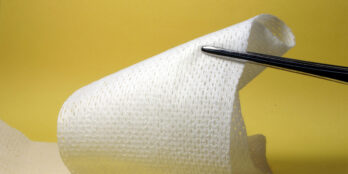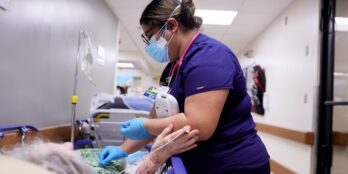
UX in Healthcare: Solving Customer Challenges
 3 min
3 min
Skilled nursing in senior care is complex and regulated. Despite the rapid adoption of computerization, paper is still often used for documentation and as part of critical workflows in the skilled nursing industry.
Shadowing a nurse
During my site visit to a high-end senior care facility, I was fortunate to have the opportunity to shadow a nurse for her shift. It was fascinating. There’s information everywhere — the fax machine is rolling, there are stickers on the phone, and staffing and discharge schedules are tightly packed into cabinets along with other binders full of papers. One of the binders contains all the lab tests for the month. While I was trying to figure out what else was in the cabinet, one person suddenly ran in toward the cabinet. Without communicating with anyone in the nurse’s station, she grabbed the binder, flipped through few pages, and took one away. The whole process took around 30 seconds. I found out that it was a Patient Specimen who came for the lab test documents.
Everyone around me seemed to have things on their mind and were constantly multi-tasking. I felt the world around me was speeding up and thought to myself, how does a nurse manage all this information from paper, email, phone call, fax, verbal communication, voice record, and computer? And how can we help?
Discovering the real pain points
Being a UX designer and solving senior care problems at PointClickCare is very different from other industries. We have to dig deep to understand the cause of a problem and find a feasible solution by navigating through all kinds of constraints. For example, redesigning a medication order template would require us to understand the connection between facility and pharmacy and the collaboration between Physician, Nurse, and Pharmacist. We work closely with our customers and internal subject matter experts (SMEs) with different healthcare backgrounds to fill our knowledge gaps.
Working in the senior care industry requires UX designers to constantly be learning and challenge the norm. Our mission is clear: we are committed to transforming care in order to make a meaningful impact on the lives of millions. While PointClickCare has provided many digital solutions to address the healthcare system challenges, there is still work to be done to revolutionize the industry with digital transformation.
Opportunities for progress
Medication errors are the most common medical errors in hospitals and a leading cause of morbidity and mortality among patients. Unfortunately, medication waste and errors can occur in all stages of the pharmaceutical supply chain, this is a challenge we are committed to solving for. Many facilities are still using paper. We typically see physicians writing paper prescriptions to initiate the medication order, leaving the nurse responsible for digitizing it to send to the pharmacy. If there’s no digital order system available, the nurse will use fax or phone call for communication. For nurses with an already endless list of things to do, this process is arduous.
The need for digitization
When facilities undergo a digital transformation, we can completely move their workflow to the cloud. The benefit? We can track all medication orders from physician, free up time for nurses, and dramatically improve accuracy and efficiency.
There is great potential for us to improve care delivery and coordination. Ultimately, it’s a collective effort but the impact good design can make on the lives of caregivers and those they care for cannot be underestimated, the right solution improves businesses and lives.
July 15, 2021






